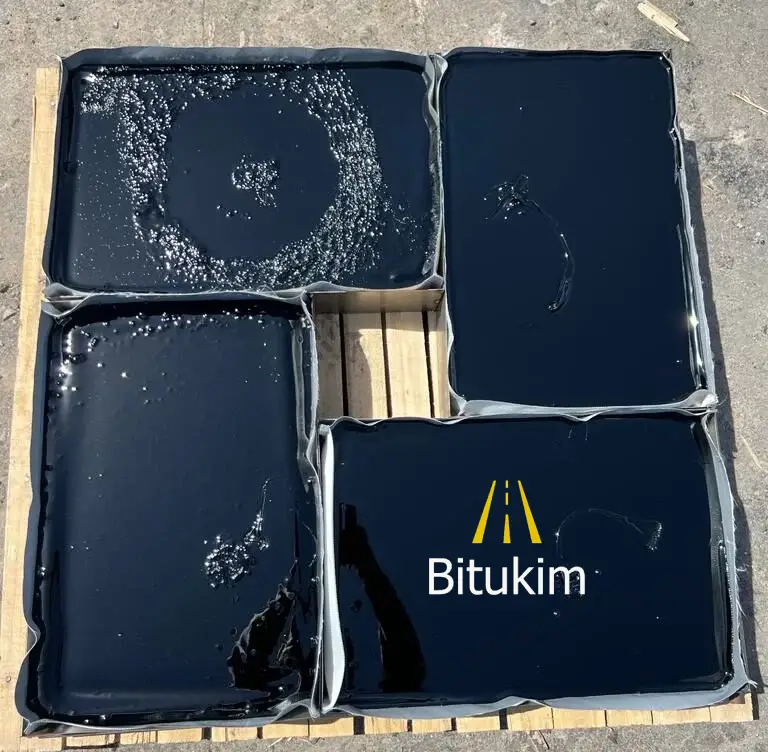Introduction of Oxidized Bitumen 90/40
Oxidized Bitumen 90/40, also called Blown Asphalt or Air-Rectified Bitumen, is a semi-solid petroleum bitumen produced by blowing air through penetration grade bitumen at high temperatures. The controlled oxidation reaction increases the softening point of the product and decreases its penetration value, producing a product that is more resistant to temperature and less sensitive to weather changes.
Bitumen 90/40 has wide applications in waterproofing, pipe coating, roof membranes, road repair, and industrial insulation. Its chemical resistance, heat resistance, and existence in the solid state at ambient temperatures are traits that position its use where longevity and high performance are a necessity in hostile conditions.
Uses of Oxidized Bitumen 90/40
Oxidized Bitumen 90/40 is a product that has far-reaching applications in an array of industries. Its application varies from chemical processing, bitumen coatings, lacquers, varnishes, and in the production of textiles. It is used in construction for sealing, insulation, pipe coating, waterproofing, and roofing.
The bitumen grade is also used in road construction, dust-binding, and patching pavement cracks. The weather resistance and heat resistance make it the ideal choice for hydraulic applications, especially under hot weather conditions, and is normally chosen for the manufacture of bitumen membranes, adhesives, and protective coatings.
Industrial Applications
Applied in the oil and gas industry for pipe coating and joint coating to prevent corrosion. Applied in electrical applications as a sealant in wire coatings. It is critical for waterproofing, utilized in the manufacture of roofing felts and membrane sheets. It also finds application in sound insulation, car tire production, and the construction of bituminous pavement layers. Its resistance to water and mechanical strength when under stress render it a long-lasting product in many industries.
Advantages
This is a very durable grade of bitumen with good resistance to heavy traffic loads and extreme temperatures. It adheres well to the surface, thus very suitable for utilization in sealing, construction, and waterproofing. Oxidized Bitumen 90/40 is also utilized as a foundation for rubber and plastic products and helps in soundproofing and corrosion-proof coating. Due to its high softening point and chemical resistance, it also performs excellently in roofing, industrial paints, artificial turf layers, and structural adhesives.
Recommendations for Handling and Storage
Oxidized Bitumen 90/40 is to be kept under controlled temperature conditions in order to preserve its physical and chemical properties. When heating the packaged product usually in site boilers controlled temperatures should be used in order to avoid overheating or degradation of the product. Good handling practice minimizes health and safety risks and ensures consistency of product for end use.
Health and Safety Recommendations
Ventilation must be provided during heating, as oxidized bitumen can release harmful fumes upon oxidation. Workers should wear protective gear like gloves, goggles, and flameproof attire. Since the product is at high temperature, it must be kept away from any open flames and sparks. Firefighting equipment should be readily available in working areas.
Packing Options for Oxidized Bitumen 90/40
Oxidized Bitumen 90/40 is available in a range of packing options to meet different project demands:
Bulk Shipments: Transported by tankers or big containers, it is economically feasible for big infrastructure projects.
Drums: Normally packed in 200-liter metal or plastic drums, suitable for mid-size applications.
Bags: Occasionally packed in woven polypropylene bags, mainly for non-liquid applications.
Boxes and Pallets: Ideally adapted for small-scale application, offering ease of transportation and storage, especially in retail or regional distribution settings.
Specification of Oxidized Bitumen 90/40
| Bitumen 90/40 | Test method | Unit | Specification |
|---|---|---|---|
| Specific gravity @25/25 C | ASTM D70 | (Kg/m3) | 1.05 approx. |
| Penetration @ 25°c | ASTM D5 | mm/10 | 35/45 |
| Softening point °c | ASTM D36 | °C | 85/95 |
| Ductility @25 °c | ASTM D113 | Cm | 5.5min |
| Loss on heating(wt) % | ASTM D6 | Wt. % | 0.2 max |
| Flashpoint c | ASTM D92 | °C | 250 min |
| Solubility is CS2(wt) % | ASTM D4 | Wt. % | 99.5 max |
| Spot test | A.A.S.H.O.T102 | — | Negative |


